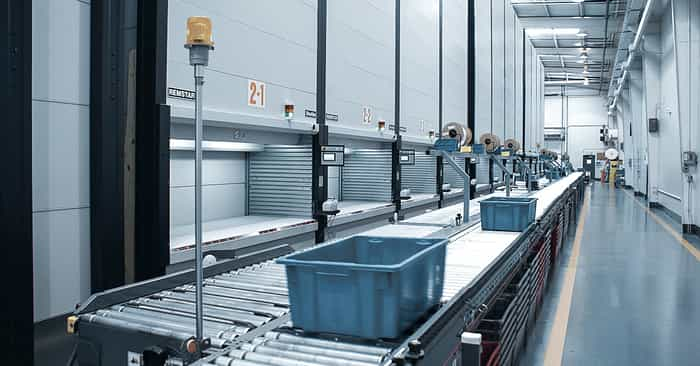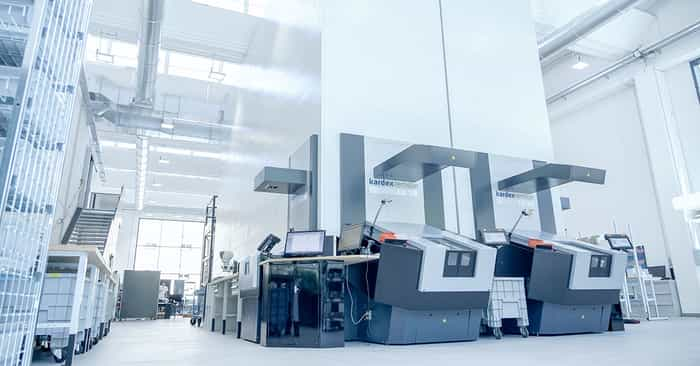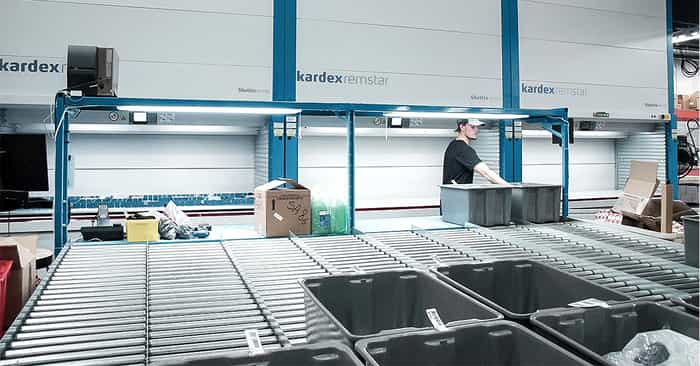You’ve probably already calculated exactly how much savings in space and productivity you can expect from putting a Vertical Lift Module, Vertical Carousel Module or Horizontal Carousel Module in your facility. And if the numbers look good, why not save yourself some extra cash and buy used instead of new?
“New or used?” is a completely valid—and smart—question. After all, a used machine is often half the price of a new one and there's no shortage of reputable re-sellers.
In certain cases buying a used system may be the right choice. But before you commit, here’s a checklist of tips to keep in mind when considering a used automated storage and retrieval unit.
1. Consider your frequency of use.
For sporadic to moderate usage across a couple of shifts, a used automated storage and retrieval unit may be perfectly fine. The machine’s components may already have some mileage on them, but those usage patterns will not create excessive additional wear.
For operations running three shifts, seven days a week a new machine machine should be recommended, as all components will be in peak condition and unlikely to fail.
2. Investigate the used vertical carousel’s condition.
A new system usually comes with some type of warranty and the sense of security that accompanies. Buying used, however, requires some due diligence and higher risk tolerance.
When considering two different used machines, for example, don’t assume that the one with the more recent date of manufacture is in better condition. Instead, ask the seller about usage situations, operating environment and maintenance practices. That’s because:
- A machine that was used at the upper limits of its maximum load capacity, and/or operated at or above the rated duty cycle of its motors, will likely have more worn components than that of a lightly used machine. Find out what was stored in the used machine and how frequently those items were accessed when making your assessment.
- Operating a machine in extreme temperatures or conditions can contribute to faster wear of components. Ask about the type of facility the used machine was used in, and its geographic location.
- If a used machine has been maintained according to a regular schedule of service and upkeep procedures, it is more likely to operate as anticipated. Request a copy of all service records.
- New vs Used: Download the checklist today!
3. Ask for original documentation.
When you purchase a new automated storage and retrieval unit, the equipment has been manufactured to meet your specific needs in terms of both loads and frequency of use. This may not be the case with a used machine.
Ask the seller for copies of all the original documentation associated with the unit, or to put you in contact with the previous owner. Further, ask for the serial number. With it, you can reach out to the manufacturer to request information such as the original dates of manufacture and installation, as well as possibly a service history report.
-
4. Get an independent inspection. -
Just because a used automated storage and retrieval unit looks clean and possibly sports a new paint job doesn’t mean it will work. The best way to determine the unit’s actual operating condition is with a third-party inspection. As you would with a used car, hire an authorized independent inspector of that equipment to determine it's condition. This—along with the original documentation—can help to determine if the machine will function how you need it to.
-
5. Review the used vertical carousel’s current configuration.
Buying a new machine guarantees that it will be set-up and constructed exactly how you need it. Trays or carriers will be sized and spaced precisely to match your mix of products. Buying a used machine means inheriting the previous owner’s sizing, spacing and sub-dividing, as well as their load capacity limitations.
While most dividers and bins can be re-arranged with a little effort, some systems have fixed components or ones that are missing and expensive to replace (or to reconfigure). If you have to replace every bin within the system to store your inventory, that cost alone could offset the savings of buying a used machine.
Further, cross-reference the measurements of the machine and its individual components—and its electrical specifications—with your facility’s access doors and power supply. Some machines may be too large to fit through your dock opening or in your intended area of use. Others may require a different voltage than your building can support.
-
6. Verify safe operation.
New machines feature the latest safety features to keep an operator safe while working with the machine. Older models may not meet the latest OSHA and ANSI standards for proper ergonomics, or lack the safety protections commonly found in new equipment. Also, confirm that a used machine still has all of its original safety devices, and that they still function as intended. Likewise, warning labels and usage placards should still be in place, or replaced if missing.
-
-
7. Determine who will provide service and support.
The distributor or manufacturer will frequently offer a routine maintenance and service package with a new equipment purchase. They will also typically include installation, warranty and technical support for a period of time after commissioning.
With a used automated storage and retrieval unit, manufacturer support may or may not be available. Alternately, a reseller may offer you a service package, or recommend a third-party for setup help, technical support, programming, training and routine maintenance. Before you buy used, make sure you have those details locked down.
-
Also, inquire about the availability of spare parts. This may require a phone call to the machine’s original manufacturer. If a component breaks and can’t be replaced, your cost savings in buying used will fly out the window.
-
8. Verify that the used machine is compatible with your other systems.
The newest automated storage and retrieval units come with the latest software and hardware systems. These include system controls and connectivity interfaces. A used machine may not be able to integrate with the other technologies on-site if your operation is similarly equipped. At best it will require a lot of technical know-how to make it work.
However, if your operation is mostly manual with little to no automation a used machine just might work. Consider having a systems integrator determine how compatible a used machine is with your existing operation’s technical requirements.
9. Determine your target delivery timeframe.Because new often means built-to-order, it can take several weeks to design, construct and deliver your new machine. Even with due diligence, getting a used machine onsite and operational generally takes less time than a new one. So if you need it yesterday—and you've checked all other boxes—by all means consider used. However, if you can wait to get a perfectly customized unit, then new is the way to go.
New vs Used: Download the checklist today!





